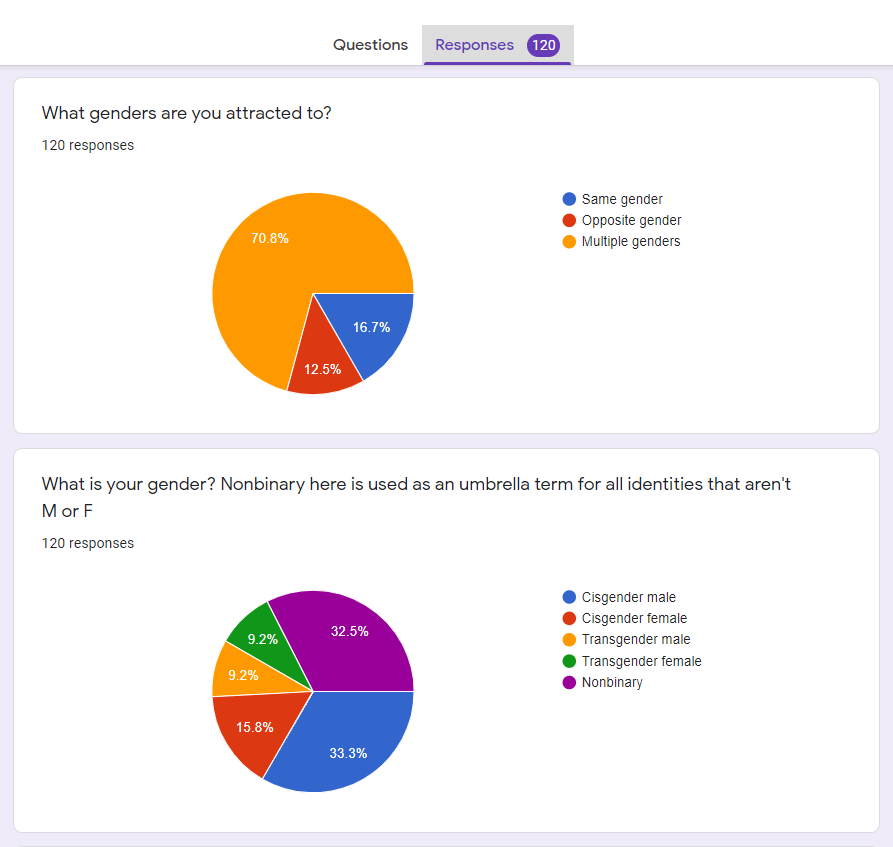This is a restored post from my WordPress. Originally posted on December 17, 2020, it has been edited afterwards, and the edit was not captured by archives. However, it was small, and I put it back where it was without loss of sense.
If you’re not new to the discourse, you must have heard it many, many times that maps aren’t LGBT. From maps themselves, from allies, from antis. Technically, that is true – LGBT, as a community, is firmly centered around gender (an exception being aspec identities), and minor attractions are age based. While all age attractions are sexualities, they exist on a separate axis from gender attractions – like this:

and everyone in the map community understands it. So, “maps aren’t LGBT”, technically, isn’t incorrect. Yet the longer I am in discourse, the more questions I have to this statement. Around 2018 I already started saying “maps aren’t LGBT, unless they’re not cis/not straight”. But even with a modifier, this didn’t sound right. Why? Because almost every map I knew was either queer, or trans, or both.
In 2018 I polled the tumblr map community and gathered 65 legitimate answers (not bad, given that the community consisted of 150-160 people at its maximum).


As you can see, only 41.5% identified as cis, and only 10.8% – as straight. Which means that on tumblr at least around 9 out of 10 maps were LGBT. In summer 2020 I repeated the experiment on Twitter, and gathered 120 answers.

Here, 49.1% are cis and 12.5% are straight. So, at least around 7 out of 8 maps are LGBT. And this is a lot, and not at all inconsistent with scientific findings. This study shows that 25% of surveyed male maps were exclusively attracted to girls/women. A study on attraction to children among women gives the following observations: “Although all women mainly reported being heterosexual, women from SIC (sexually interested in children) websites demonstrated a higher proportion of homosexual and bisexual orientation than women from general websites.”
At least ¾ maps are LGBT, and on social media platforms that number will get even bigger. And this is what is wrong with “maps aren’t LGBT”. Statistically, a map is much more likely to be LGBT than not. It would be more right to say “maps are LGBT, unless they are cis and straight”. But people wouldn’t like that.
Today my friend Ai received the following ask:
“ok, one bisexual to another, please listen. you gotta lose the “bi MAP” flag thing. you might not realise it, but you’re actively contributing to the age-old homophobic/biphobic dogwhistle of associating LGBT communities with pedophilia, and it’s incredibly harmful to the rest of us – particularly with the recent rise of “save the children” conspiracy theories among the right wing. if you’re really committed to non-offending then that’s rly great and i wish you the best (though i do feel that ‘map pride’ is … unhealthy and antithetical to this idea), but please listen to me when i say that perverting our flag for the purpose of expressing attraction to children is playing directly into the hands of reactionary homophobes. please stop.”
This is their answer:
“The bimap flag is for people who are both bisexual and a map, it doesn’t mean that being a map should be considered lgbt. I agree that trying to integrate the map and lgbt communities would hurt a lot of lgbt people and that’s part of why I don’t think maps should be added to the lgbtq+ label or community. But the reality is that people who buy into anti-lgbt conspiracy theories are going to find or invent evidence that the lgbt community accepts pedophilia regardless of what we do. Someone like me using a bimap flag isn’t hurting anyone, at worst someone would assume it’s a map trying to force themselves into the lgbt community. Even for a conspiracy theorist, seeing a map using a bimap flag does not point to the lgbt community accepting maps. To say that I’m “perverting” your flag is hilarious, essentially you’re saying “get your grubby little hands off our flag, being associated with you would tarnish us so stay away”. Why do you expect us to care for you when you’ve done nothing but fend us off with a ten foot pole? It’s not as if I’m losing your support by using it, considering you can’t bear to be associated with us you were never going to support us anyway. I’m a bisexual map, so I’ll use the flag if I want to.”
The response names both the problem and the outcome. “Maps aren’t LGBT” gained traction as a slogan because LGBT antis are afraid. They feel an urge to virtue signal to homophobes: “We don’t accept maps, look, they want to join, but we keep them out!”. They made up the imaginary majority of cis straight maps that wants to join LGBT, specifically to preemptively show everyone that they don’t accept maps.
But, (un)fortunately, in the age of pedo panic, your political opponents will accuse you of being maps regardless of how much you condemn actual maps. You will get a temporary relief as you and your oppressors join together to oppress someone more marginalized, but then they’ll inevitably turn against you, and in a hysterical environment, oriented onto seeking and exposing maps, false accusations will prosper, and everyone will be too afraid to stand up for the victims.
Mapmisia is an infectious disease for any minority group. It’s quite amusing, in a cynical way, to watch seemingly tight groups of friends fall apart because one of them was accused over a screenshot out of context and a loli meme.
The rational solution would be to deal with the maps’ existence, and to deal with the fact that the majority of maps are, in fact, LGBT. Then the accusations would lose their power. It’s not as scary to be a map (or be perceived as such) if you’re not surrounded predominantly by mapmisiacs. Trust me.
I’m looking forward to being quoted out of context too by people with selective reading comprehension.
The following piece of information was lost in the original post:
My 2022 map community survey, polling predominantly map fediverse, where non-straight maps take 88.4% and non-cis maps take 65.2%.


Leave a Reply